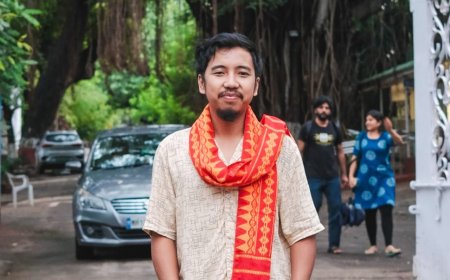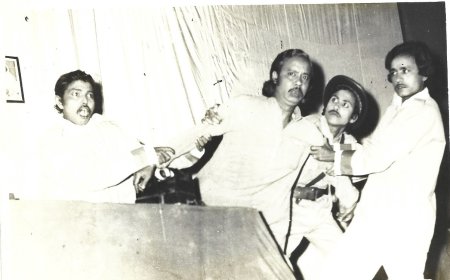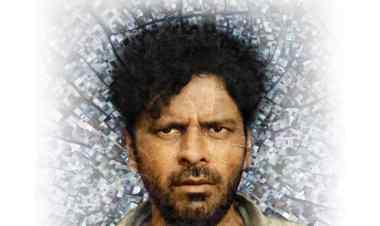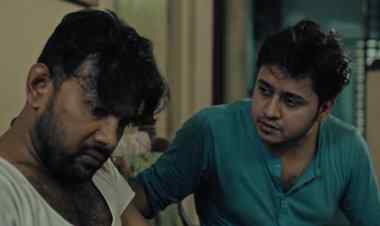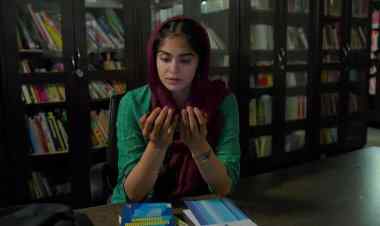DOSTOJEE – A FILM ON THE INNOCENCE OF CHILDHOOD
Shoma A. Chatterji's in-depth review of Prasun Chatterjee's Bengali film Dostojee (2021). Dostojee is a touching film that appeals both to children and to adults and weaves a social message of communal harmony and universal brotherhood, as said by Shoma A. Chatterji.

The terrible betrayal of faith that has disturbed the harmony and the secular spirit of the country for long, a look at Life through the eyes of two small boys, one Hindu and the other Muslim, underscores that these do not affect the faith of children in friendship and the faith, language, caste, class and economic status of the friends do not matter at all. Not a slightest dent can be made in the bonding that sustains between two small boys. All this comes across beautifully in Prasun Chatterjee’s maiden film Dostojee in Bengali.
The tremendous success of the film across film festivals in India and beyond which includes a handsome grant from a Japanese organization to make a film partly shot in Japan, is topped by the thumping commercial success of the film right across theatres in West Bengal. Children’s films do not form a focus of interest for most filmmakers in India today. In this creative desert of ‘nothingness’ Dostojee arrives like that real stream rising from its own oasis to reach out to its mesmerized audience.

Film Still: Dostojee
Dostojee is a touching film that appeals both to children and to adults and weaves a social message of communal harmony and universal brotherhood. The director does not make any attempt, subtle or powerful, to make his film an agency to make it a slogan-raising propaganda for communal harmony. His film does it all the same and you are not even aware of it as you leave the theatre, spellbound.
The aftermath of Babri Mosque demolition and the Bombay blasts in India, 1992 -'93, found its violent echoes in a remote village of West Bengal adjacent to the India-Bangladesh border where the story begins to unfold. A story of friendship between two little boys belonging to two warring religious communities. Palash (8) is the son of a Hindu Brahmin while Safikul (8) is the son of a Muslim weaver who live in a village along the borders of Nadia in West Bengal during the 1992 religious schism between the two faiths who are friends close enough not even to understand what belonging to different “faiths” mean and how they can or cannot affect friendship, pure and simple. It is a bonding that transcends all man-made lines that exist, created between two communities by men and women of both communities, consciously, subconsciously or through political manipulations.
“Dostojee” is a form of address somewhat approximating to “yaar” in the local language. The director chooses this as the title of his film and this fits the theme of brotherhood quite well without being too much-in-the-face. The two boys address themselves as dostojee right through the film, and not by their names.
The innocence of Palash and Safikul receives its sustenance from nature. The greenery of the village, the river and the vast stretch of paddy fields playfully rebound the echoes of the voices and the laughter of the boys. The frames are filled with visuals of a beautiful blue sky with a flight of birds, suddenly turning grey and scary by the sudden rains which however, the boys revel and like all boys, get completely drenched in the rains.
However, unknowing to their parents or to them, no one suspects the tragic role destiny plays quietly to disturb the rhythm of harmony created by relentless fate arrives quietly, when separation becomes the destiny of their friendship. How the boys face this parting of ways to spread wings to fly again. Leaves a message for all those who must confront loss at one time or another.
There is a beautiful touch of a tiny caterpillar captured by the two boys who keep the caterpillar inside a glass jar, feed the small thing with leaves they pick up from their surroundings, waiting for it to grow into a butterfly. The glass jar is kept in a small space in one of the boy’s house which the parents do not object to.
Interestingly, their communal differences never play any part in their friendship and the same applies to their respective parents who are neighbours in a village where feelings are highly sensitised post-Babri Masjid incident. The parents do not have any communicating link but they do not interfere in the friendship between the two boys either. They are neighbours with a thorned fencing separating the two homes. Palash’s father is a poor Brahmin priest and Safikul’s father is a weave helped by his growing daughter. This sensitive ambience is shown only in a brief scene through a neighbourhood meeting but it does not bear any impact on the film or on the friendship between Palash and Safikul. The visual richness heightens the aesthetics of the entire film from beginning to end.
The film was shot in West Bengal along the India-Bangladesh border. Chatterjee says that his inspiration was fired by the fine threads of our social fabric that are being destroyed bit by bit every day by discriminatory politics. Not just in our country but this is the reality of the whole world. Looking around us we can see the entire world plagued by the menace of religious polarization.
The friendship between the two boys comes across through gentle touches like the two going to school, taking tuitions from the same private tutor who is young, ambitious but likes the two kids, the two boys taking a piggy-back ride on a passing vehicle, following a village trinket seller, one of them jumping into a van which the other one is afraid to jump on, the boys flying kites to colour the blues of the sky, taking an impromptu swim in the turbulent waters of the river nearby, the friendship born naturally without melodrama or even drama, underscoring the depth of the bonding without being too obvious about it.
Asif and Arif Sheikh as the two boys Safikul and Palash are non-actors as are most of the other actors in the film. These boys have raised the film to a different dimension with their naïve innocence and their entirely candid performances shorn of make-up or glittering costume or any kind of glamorisation. Interestingly, their personal stories are as interesting as the characters they portray. They never saw even a still camera before they worked in the film.
Tuhin Biswas’ cinematography makes optimum aesthetic use of the wide skies of, the two boys shot in a mid-long shot flying kites and exchanging ideas of what their dreams for the future are. Nature, in all its varied colours and manifestations, comes across beautifully without either romanticizing or glamorizing the story and the scenario. While Sariful wants to smuggle cows across the Bangladesh border, Palash dreams of taking his mother to Nadia which is a Hindu-dominated place within the Indian borders. Not for them the distant dream of becoming an engineer or a doctor.
The film does not have a single song. All one gets to hear are the natural sounds of the environment where the film was shot entirely on location. The usage of audio elements – like the sound of the handloom, buzzing of crickets, distant tones of Azaan (the call of prayer for Muslims), or the continuous sounds of the thundering rains, play a very significant role in shaping the circumstances of the film. These helped in keeping the story and its characters closer to its roots. According to the director, “it was a very conscious decision, not to use background music in a dangerous manner – communal discrimination and communal violence.”
Towards the end, the caterpillar has grown into a butterfly and when it is opened, the butterfly flies away while the mother of Saiful breaks into tears as that small caterpillar inside the jar meant much more to her than anything else at that point of time. The film is very tragic but the director has presented it both as a tragedy as well as a memorable tribute to the innocence and the naiveté of boyhood.
Dostojee premiered at the 65th BFI London Film Festival last October, then Goteborg, Jenoju, MAMI (India Gold), Kerala (World Cinema) and many more. The film was in the International Competition section of SIFFCY 2022, where it won the CIFEJ Prize and the Best Director award.
***
About the author: Dr. Shoma A. Chatterji is an Indian film scholar and author based in Kolkata.
What's Your Reaction?




































